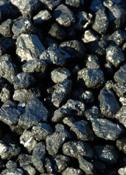 China, the world’s largest emitter of CO2, is the focus of a new $2 million investment in clean coal technology research by Stanford’s Global Climate and Energy Project (GCEP).
China, the world’s largest emitter of CO2, is the focus of a new $2 million investment in clean coal technology research by Stanford’s Global Climate and Energy Project (GCEP).
The project will fund research into large-scale carbon sequestration in underground geological formations. China relies heavily on coal for electricity generation and in 2006 was reported to be building the equivalent of one new coal-fired power plant every week.
“China is growing so rapidly, and if they’re going to be able to lower their emissions, they are going to need a whole suite of technologies,” said Sally Benson, director of GCEP. “They are doing a lot with solar technologies and energy efficiency but China is not abandoning coal. So, we’re looking for ways they can reduce their emissions from coal.”
The three-year project is an international collaboration among the University of Southern California (USC), Peking University (PKU) and China University of Geosciences at Wuhan (CUG). It will focus on the technical aspects of stashing carbon in saline aquifers, such as chemical reactions between the rock and carbon and understanding what portions of the aquifers can actually be filled up. The research will involve 39 scientists and students, and will integrate geological modeling, reservoir simulation and laboratory experiments. The results may shed needed light on China’s overall carbon storage potential.
“Saline aquifers have been shown to have the biggest storage capacity across the world,” said Benson, “and China has a tremendous need.”
China’s not the only country with a tremendous need. As the second largest emitter of CO2 (and still bigger than China per capita), the United States has yet to deploy large-scale CCS. Yesterday, the U.S. Department of Energy announced $27.6 million in new funding for 19 projects exploring potential carbon storage technologies.
